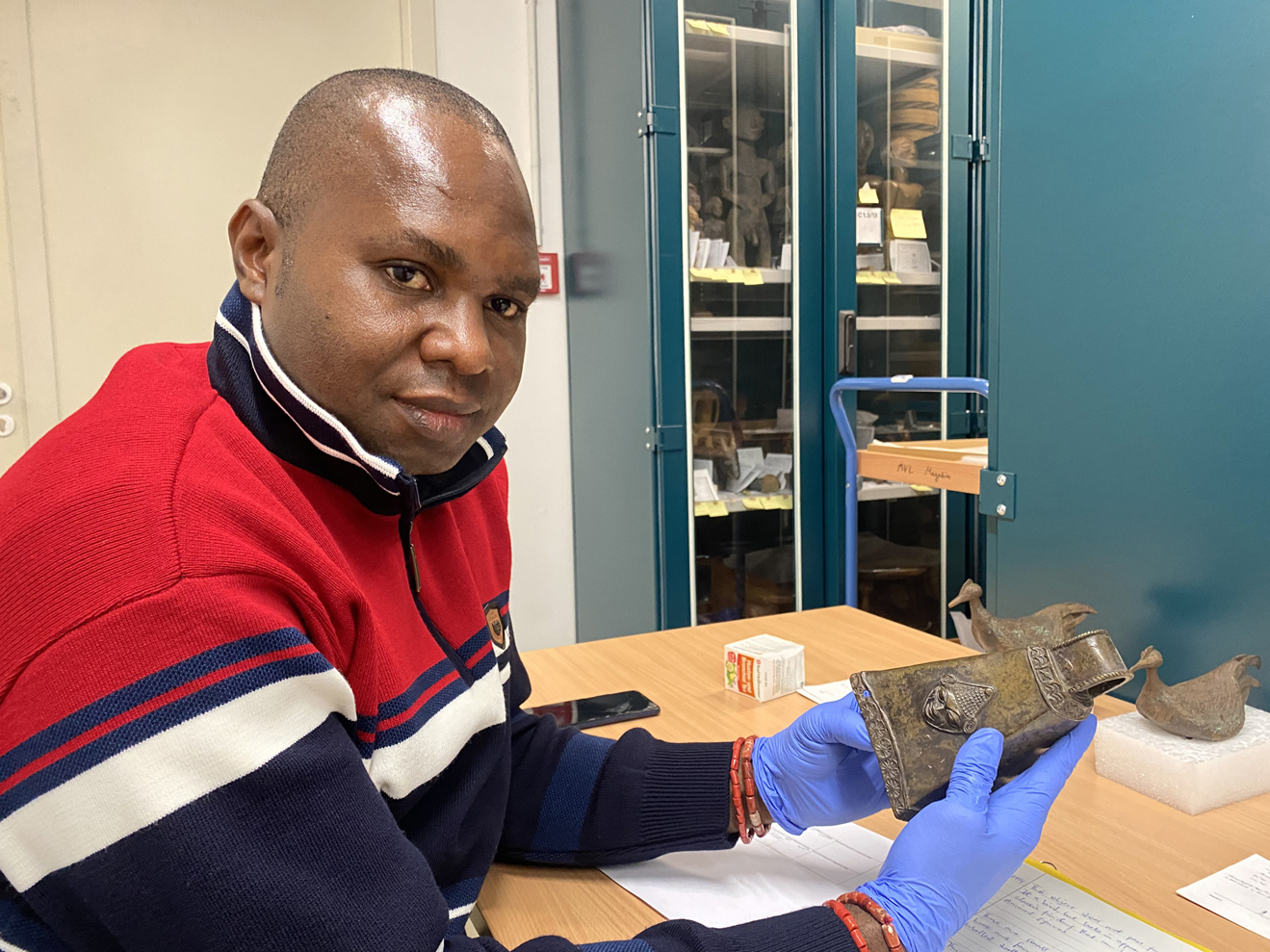
Research lead Osaisonor Godfrey Ekhator-Obogie / Photo: Osaisonor Godfrey, EKHATOR-OBOGIE
What is the aim of Digital Benin?
The aim of the project is to create a catalogue that’s able to show in one place the displaced Benin Bronzes that were looted in 1897 and globally distributed between 1897 and 1930. The majority of these cultural objects are now in European and American museums.
By the close of the 20th century it was very difficult to say categorically where these objects were, and how many of them were in museums across the world. Digital Benin aims to help provide an answer to this long-standing question.
What does this project mean to you personally?
As a Benin man, I grew up learning about the invasion of The Kingdom of Benin and the looting of these cultural treasures, but I’d never had the opportunity to interact with them.
This platform has given me the opportunity to really appreciate these treasures – to learn from them and use them as a resource for education and research.
What have you learned from working on this project?
Before Digital Benin, I didn’t realise how far beyond Britain the circulation of these objects had gone – to 20 countries across the world.
These treasures are veritable sources of history about our civilisation and our development over time before colonisation. While studying them, I begin to appreciate the fact that of all the pre-colonial sources of history about the Benin Kingdom, these artefacts are the most reliable. Every bronze plaque is a page in the history of Benin. That was an amazing lesson for me.
What do you think should happen to these treasures now?
The ownership of all the looted objects obtained in questionable circumstances should be given to Benin and to Nigeria from where they were stolen. Once they’ve been returned to their rightful owners, Western museums and institutions can enter into professional collaborations so that they can exhibit some of them on loan.
These treasures are ambassadors for Benin – it’s important for us, the Benin people, that ownership is returned to their rightful owners, but some of them should remain in museums as representatives of Benin.
If you continue to keep these objects in Western museums, and those museums continue to tell their story, you’re telling a Western story. People should tell their own stories and the stories of their objects.
Some argue that artefacts should remain in Western museums because they may be better able to preserve them. How do you respond?
This was a late 20th century argument from European and American museum professionals. Now scholars have come to realise that before these objects were looted, they were very safe. Also, these objects were not produced as museum objects, the were created as functional objects within a living culture. They can’t be better preserved in Western museums – in a society where they have no cultural value – than in a society where they are meaningful and significant.
What advice do you have for museums grappling with these issues?
Digital Benin has helped bring a sense of transparency to the museum world; it has shown that there’s a tendency among museum professionals to approach this debate with openness.
If we follow this approach, it will be a win-win for both the countries of origin and for Western museums.
DIGITAL BENIN
The result of a two year, €1.5m international research project funded by the Ernst von Siemens Art Foundation, Digital Benin brings together objects, historical photographs and documentation material from collections worldwide to provide a comprehensive database of the royal artefacts looted from The Kingdom of Benin (now Edo State, Nigeria) in 1897 and distributed around the world.
Connecting digital documentation about the looted objects to oral histories, object research, historical context, a foundational Edo language catalogue, provenance names, a map of the Kingdom of Benin and museum collections worldwide. Digital Benin connects data from 5,246 objects across 131 institutions in 20 countries.
More: digitalbenin.org
If you continue to keep these objects in Western museums, and allow those museums to tell their story, you’re telling the Western story. People should be able to tell their own story and the story of their objects